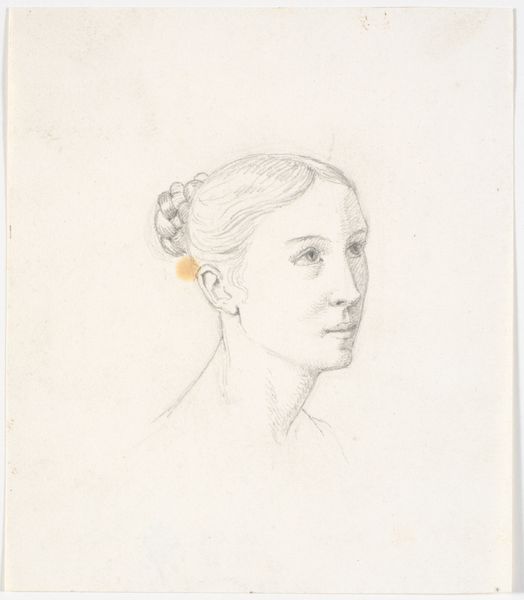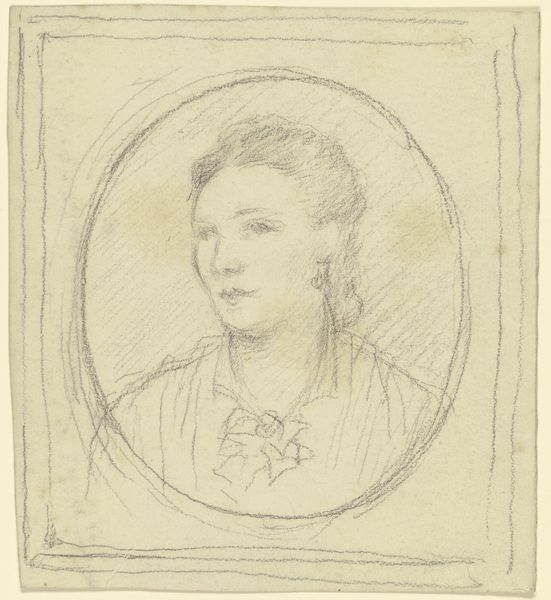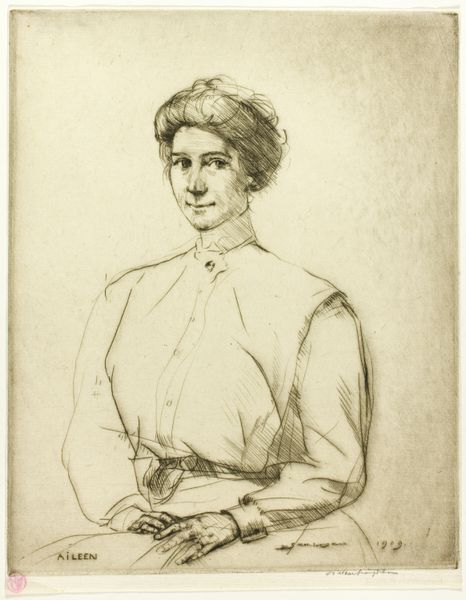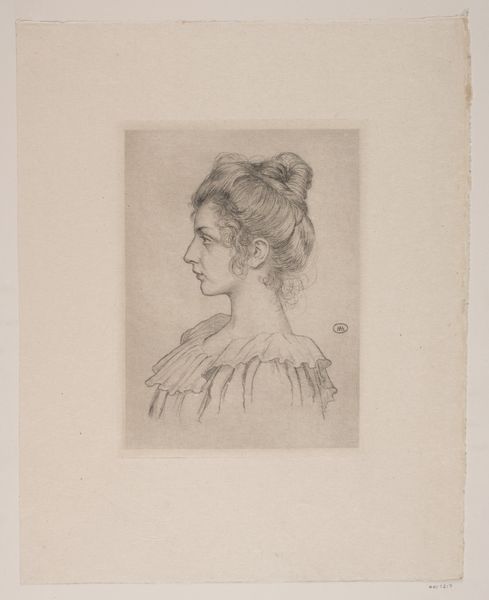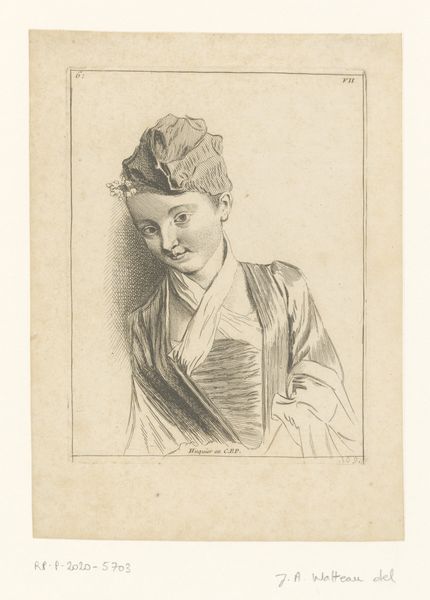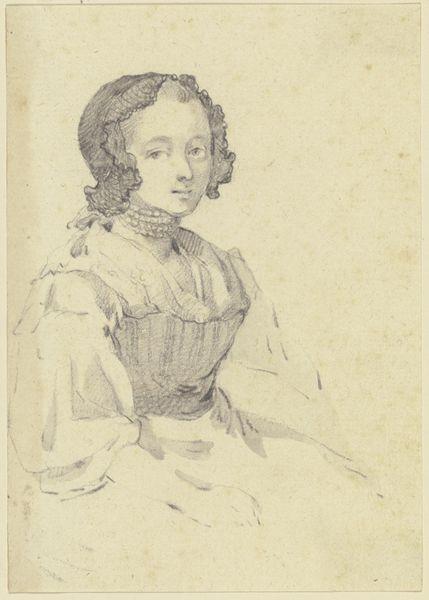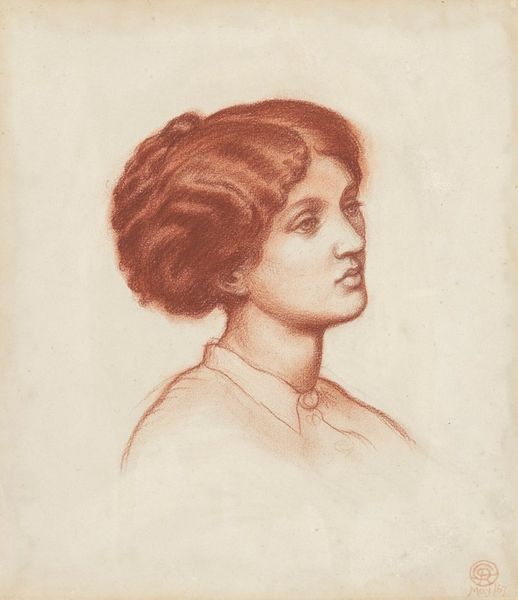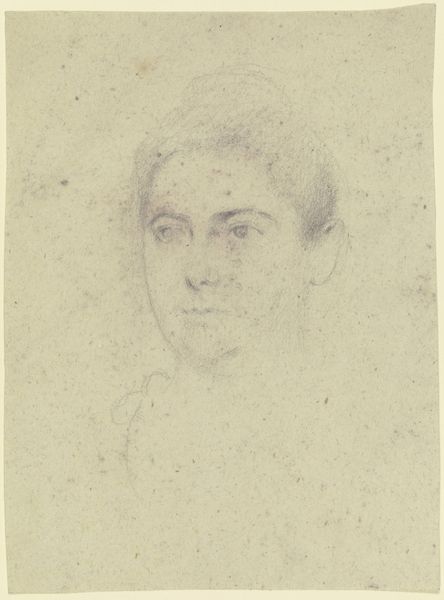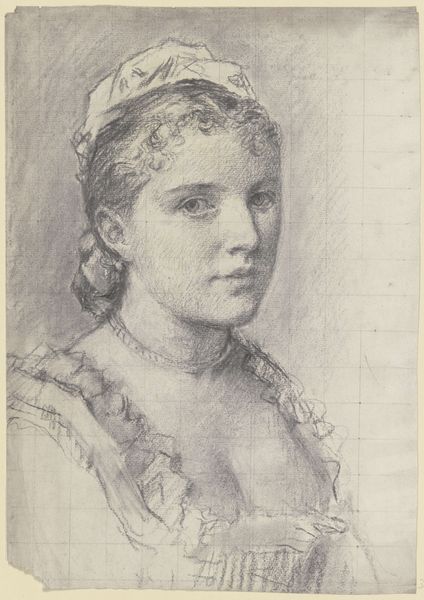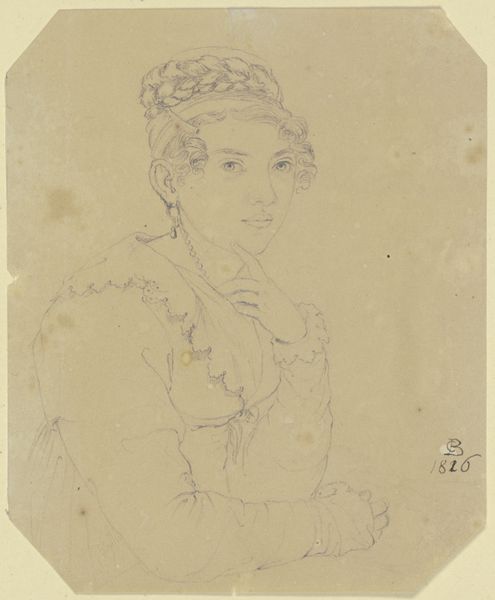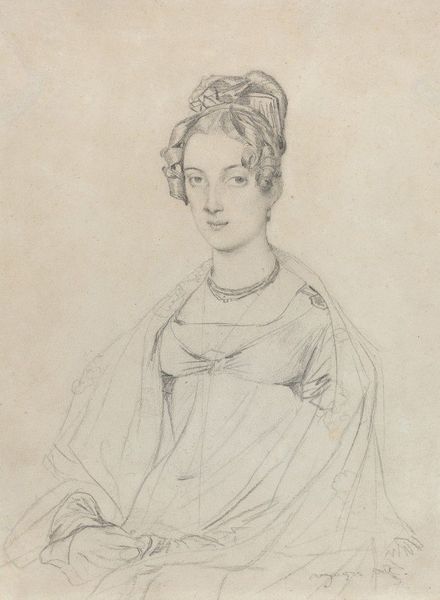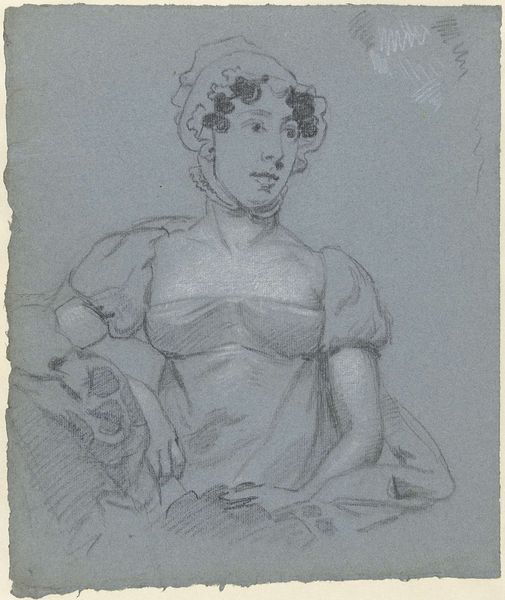
Die Frau des Künstlers, Elisabeth Hoff, geb. Scheurer, als dessen Braut 1827
0:00
0:00
drawing, pencil
#
portrait
#
drawing
#
pencil drawing
#
romanticism
#
pencil
#
academic-art
Copyright: Public Domain
Editor: This is a pencil drawing from 1827 by Nikolaus Hoff, titled "The Artist's Wife, Elisabeth Hoff, nee Scheurer, as his Bride." There's a gentle, almost ethereal quality to it, isn’t there? The soft lines and the subject's gaze give it an intimate feeling. What do you see in this piece? Curator: Indeed. As a historian, what immediately strikes me is the portrayal of women within the Romantic era, especially concerning marital status. Consider how art served as a medium to cement social bonds and construct idealized images of domesticity. This piece presents Hoff's wife within the accepted visual rhetoric of the period, emphasizing purity and delicate beauty. It’s interesting to think about the function of this image, not only as a display of affection but also as a marker of social standing. Does this composition fit prevailing standards? Editor: Well, her hairstyle is quite elaborate. The detail around the eyes draws you in, too, as well as the inclusion of her pearl necklace, although not many more details around the bodice, drawing attention upwards. I guess it feels classical and controlled for a romantic depiction. Do you think its public presentation impacted how Nikolaus portrayed Elisabeth? Curator: Undoubtedly. As her husband and an artist, he was constructing a visual representation for a public audience, perhaps intended for display or circulation within their social circle. The image operates within specific cultural expectations for bridal portraits, balancing genuine sentiment with an adherence to established visual codes. The control you noticed, combined with intimacy, is key here. Editor: That’s a fascinating perspective. I never really considered how the personal and public intertwine in these intimate portraits. Curator: Art serves as a lens through which we can analyze the dynamics of past societies. Examining portraiture allows us to better see how expectations and constraints operate. Editor: It certainly changed the way I will look at this portrait from now on! Curator: Excellent, that's why we analyze art through the lens of history.
Comments
No comments
Be the first to comment and join the conversation on the ultimate creative platform.

